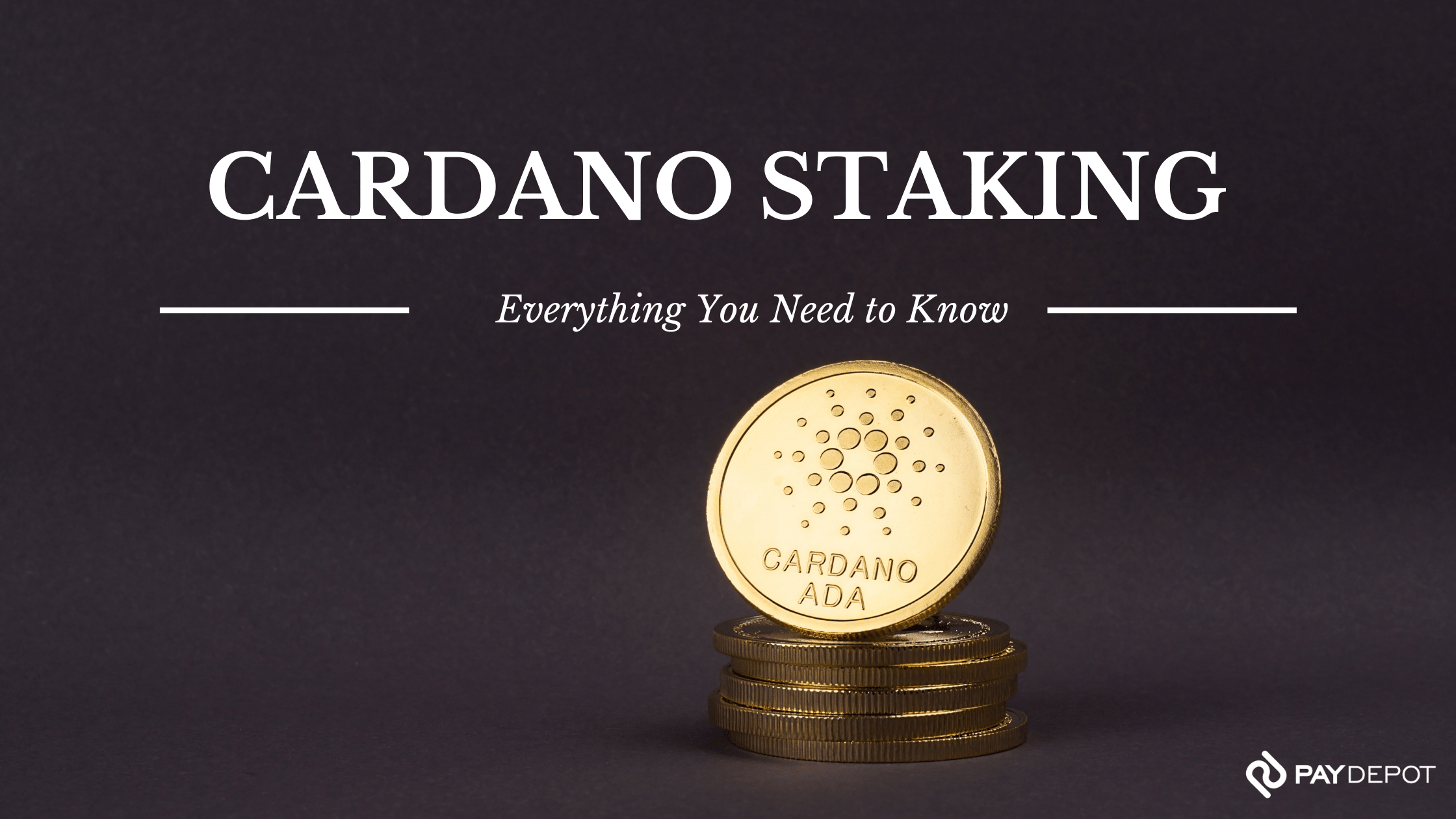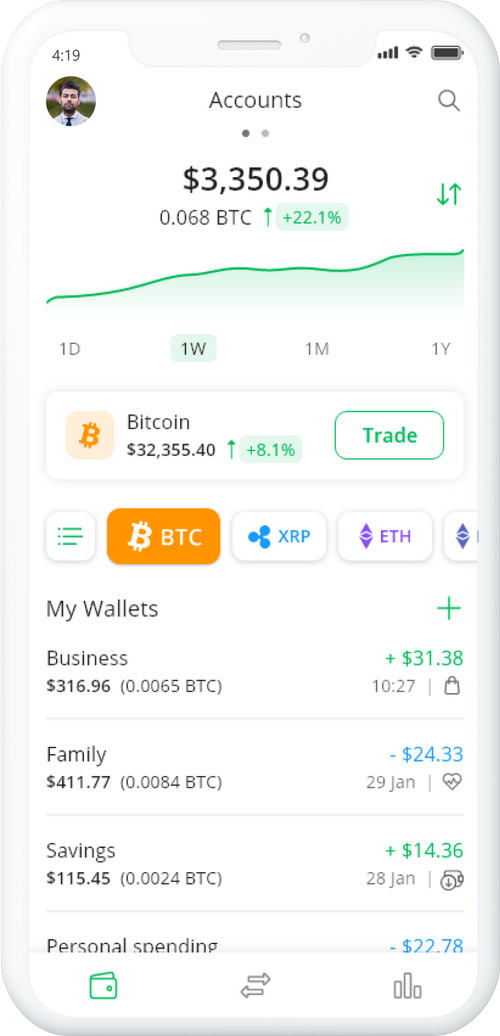The Cardano network is a decentralized platform, different from Bitcoin networks, that allows for the creation of smart contracts and decentralized applications (DApps). That being said, Cardano staking allows Cardano users to earn Cardanos by investing their funds. There are two ways you can stake Cardano: solo or with a pool. This article will go into detail about everything you need to know about Cardano staking.
General Cardano Questions
If you're new to the world of cryptocurrency, you might be asking yourself:
- What is Cardano staking?
- Why should I stake Cardano when there are so many other coins with much higher returns than what Cardanos offer?
- How do I get Cardanos to stake them in the first place?
These are all valid questions. So, let's answer these one at a time and see if we can't dispel any confusion about Cardanos on your end!
The best way to earn Cardano staking rewards is to stake it. Staking can be viewed as earning interest on your holdings. Certain assets, such as Cardano (ADA), have a concept known as staking. This means that tokens are locked up and unspendable for a short period of time. However, this is not the case with Cardano. Similar to Tezos and Augur, you can spend your Cardano whenever you choose.
What is Shelley HardFork?
The Shelley HardFork is the most recent Cardano update that was distributed in June of 2020, which essentially upgraded the Cardano blockchain to include a decentralized data layer. This means that all new blocks created on the Cardano network after this event will be entangled with metadata, which is stored in an off-chain database known as Daedalus, ensuring that it has greater value and security.
Why do I have two Cardano addresses?
Since the introduction of Shelly HardFock, you'll now see that you have 2 Cardano addresses. Therefore, if you are Cardano staking, you'll need to ensure you're using the New Shelly Cardano format for addresses. You'll know you're using the correct address because it starts with addr1 instead of Ae2TD that the Legacy Byron address will show.
How do I switch between Legacy and Shelley Addresses?
If you are Cardano staking or want to stake Cardanos, we recommend switching your address format from Legacy Byron to New Shelly Cardano on the Daedalus Wallet. By default, your wallet will show your Shelley address. If you want to switch, all you'll need to do is go into the Receive part of your Cardano wallet and click the arrow next to the QR code to switch between addresses.
What is Cardano staking, and how can I benefit from it?
If you're looking for a great way to earn passive ADA income, staking Cardano is the perfect solution. Unlike other crypto projects, Cardano doesn't force you to stake your ADA tokens. Instead, you can view it as earning interest on your holdings with some assets.
With these types of coins, staking means that you invest them for a certain period of time and hope they will grow in value during this time. This is beneficial if volatility has decreased lately but risky otherwise because investments may have higher returns than bonds or savings accounts offer currently. However, this isn't the case when dealing with Cardano—much like Tezos before its launch, where people could get rewards from stakes (staking) and voting power (voting).
Can I choose the amount I want to stake, and is my balance spendable while it's staked?
You won't be able to choose how much is delegated to any pool because you're actually staking your Cardano address. This means that you're either risking your entire balance, or you're not risking anything at all. However, you'll still be able to complete transactions and compete in other activities while your ADA is staked. Once it's over, your rewards are based on the current account balance.
Which node will I be delegating my funds to?
There are tons of different places you can stake your ADA tokens, and they all offer additional benefits such as being the best for beginners or ADA fixed rates. Some of the places you might choose may include Crypto.com, Kraken, Binance, CEX.IO, KuCoin, Daedalus Wallet, or Yoroi Wallet.
How much can I earn from staking my ADA?
There's a lot of money that can be made from staking your Cardano. It depends on the total reward rate of the stake you enter. For example, today's total reward rate is at 6.29%, with a monthly earning of $5.17 if you invested 1,000 USD.
What is the minimum amount I need to start staking?
The best part about staking is that it's accessible to everyone, whether you only have a couple of dollars or hundreds of thousands of dollars to invest. The minimum amount that you need to start staking is 5 ADA, which is around 12 USD.
When will I start earning rewards?
Your rewards are based on when you decide to start staking your Cardono. It's important to remember that there is an approval process where your information and payments need to be verified through the system to ensure there is no fraud. This will take around three weeks to be completed.
Once you've been approved, you'll need to wait five days for the first cycle to complete itself before you can begin earning rewards. Once your account has been approved, you can add money at any time, and it will be immediately staked. However, it will still follow the same approval process, meaning you may be delayed receiving your funds.
Do I need to claim my rewards?
Thankfully, there is no need to claim your rewards when staking your Cardano. Your staked balance includes your unclaimed rewards, which allows you to earn rewards on top of it without having to do a thing. You'll only need to take the time to claim your rewards if you plan to exchange or send your Cardano.
Yes! Staking is 100% safe, just as if you were holding your money in your digital wallet. You are still free to use your money and control it while it is staked without any penalty or holding fees.
Is staking Cardano safe?
Yes! Staking is 100% safe, just as if you were holding your money in your digital wallet. You are still free to use your money and control it while it is staked without any penalty or holding fees.
F.A.Q.
1. How to stake Cardano (ADA)?
In order to stake Cardano, you'll first need to make sure that you have set up an account through one of the above-listed platforms. From there, you'll want to click on Your Cardano and choose to stake ADA. In this area, you'll be able to see the current rate and watch how much you're earning. You'll be able to unstake your ADA at any time through the same process.
2. How much can I earn staking Cardano ADA?
The amount that you can earn by staking Cardano ADA is entirely up to the current rate and the wallet you choose. There are tons of different pools, and cardholders need to be aware that they're risking their entire balance or nothing at all if they stake in a pool.
3. What is a Cardano ADA Stake Pool?
A stake pool is a Cardano node network that users can receive rewards and delegate to. It's a passive way of earning extra money without having to involve yourself in the process actively.
4. Is there any risk or lock-up for staking ADA?
No. A common misconception is that your funds are tied up or locked. However, this is not how it works. During the staking process, you'll still have complete access to your coins and how they're staked. You can complete transactions and transfer them out from the account at any time. You won't have any risk of losing money while delegating.
5. How much money will I be able to make?
The amount of money you can make with Cardano staking depends on what platform you choose and how much you stake. You can earn anywhere between .5% to over 6% in a few easy steps.
6. Do you need the Internet to stake Cardano?
You'll need to have a solid internet connection in order to stake Cardano.
7. What makes a good stake pool?
Good stake pools are very reliable and have solid returns as well as have a lot of interest from other users. Therefore, you'll want to vet out the top pools to ensure that they produce high-profit margins and have been well-known or used by many different people.
8. Are rewards guaranteed?
There is no guarantee of rewards with Cardano. It depends on the performance of the stake pool and how the rewards are shared.



